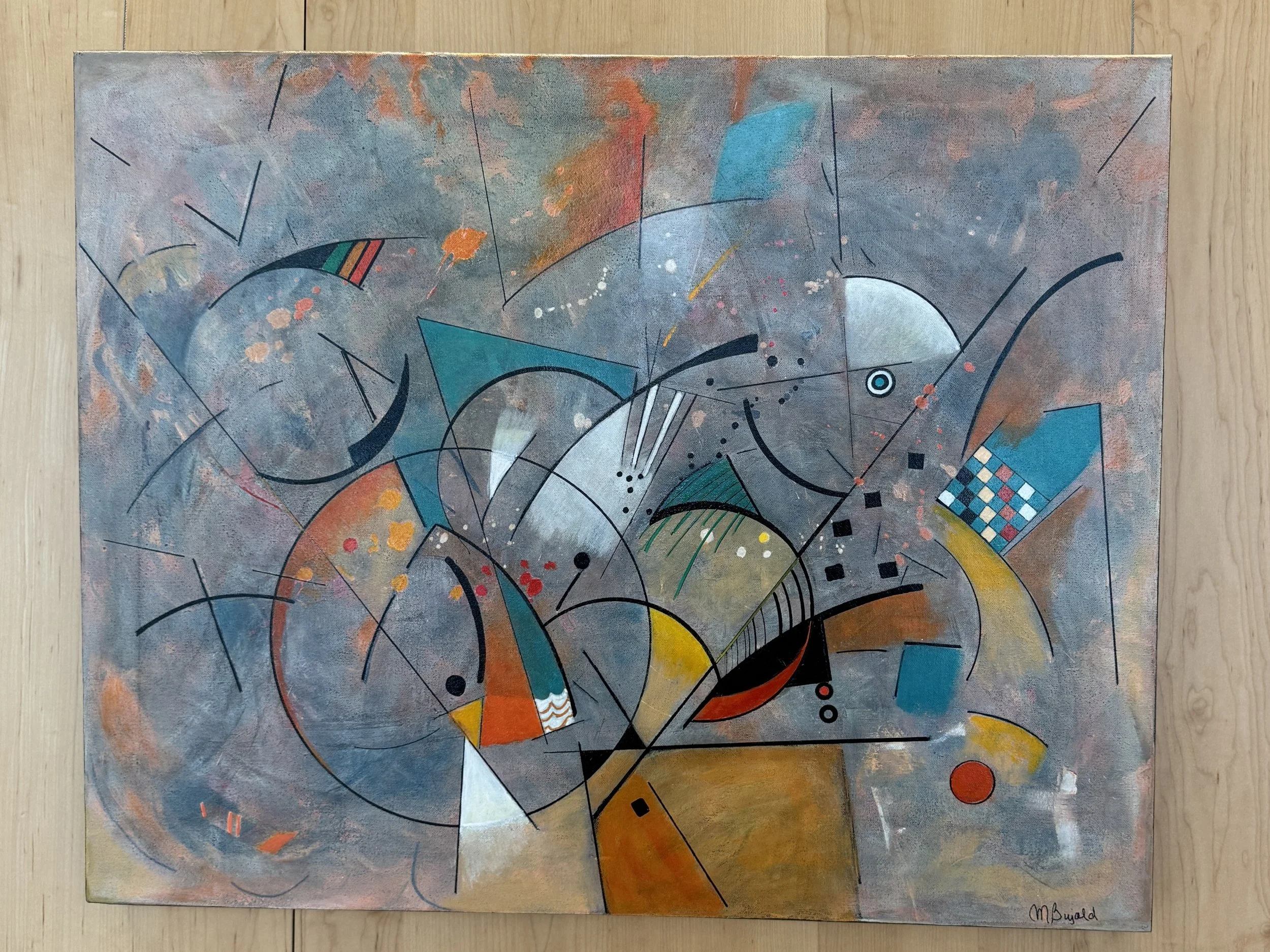Margot Bujold: A Modern Bridge Between Picasso and Contemporary Expression
Margot Bujold’s artwork stands as a powerful testament to the ongoing conversation between past and present in the world of art. While Picasso's revolutionary cubism opened doors for a new artistic language, Bujold walks through those doors on her own path. Her paintings honor the artistic legacy of the past while carving out space for contemporary emotions and deeply personal narratives.
Margot Bujold - Sans Titre Acrylique
Bujold’s work is a fusion of cubist influence with a softer, more introspective sensibility. This approach not only keeps the essence of cubism alive but also transforms it into a modern, emotionally rich form of expression. Through her distinctive brushwork, she challenges the viewer to look beyond the surface of geometric shapes and fragmented forms, encouraging a connection with the emotional stories woven through each piece.
The Intersection of Picasso’s Legacy and Personal Expression
Pablo Picasso - Three Musicians
What makes Margot Bujold’s art so captivating is her ability to honor the legacy of cubism while making it distinctly her own. Picasso’s influence is undeniably present, but it is filtered through Bujold’s lens, blending abstraction with emotional depth. Her works speak of human connection, inner struggle, and personal transformation, elevating the traditional cubist style into something uniquely modern and emotionally resonant.
By incorporating elements of cubism, abstraction, and reflection, Bujold’s art invites us into a dialogue about how art evolves—not by copying the past, but by transforming influence into something deeply personal. This is a testament to her mastery of taking historical elements and making them relevant to contemporary themes of identity, emotion, and human experience.
Thoughts: Influence as Inspiration, Identity as Creation
Margot Bujold’s art exemplifies the essence of the creative journey—one that honors its historical roots while blossoming into something uniquely personal. While echoes of Picasso’s cubism and abstract art are unmistakable in her work, Bujold’s paintings ultimately speak in a voice all their own. They explore the emotional depth of the human experience through a medium that challenges, provokes, and connects.
If you appreciate the spirit of Picasso but crave a modern, heartfelt interpretation of cubism, Margot Bujold’s work offers a beautiful bridge between these worlds. Her paintings are a beautiful example of how art can evolve, reflect personal identity, and invite viewers into an intimate emotional landscape.
What do you think? Have you noticed Picasso’s influence in Margot Bujold’s art, or does her unique style stand apart for you? Share your thoughts in the comments below!

